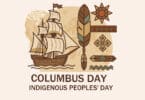Today, we’re exploring the story behind Veterans Day—a day that holds a special place in the heart of America. Whether or not you have veterans in your family tree, Veterans Day is a meaningful time to reflect on service and sacrifice. For family historians, it’s a chance to think about those in our families who served, to honor their legacy, and to understand the origins of this significant day.
Every November 11, Americans come together to recognize those who have worn the uniform, honoring their courage, resilience, and commitment to our country. But Veterans Day isn’t just a U.S. observance; it’s part of a worldwide tradition. Many other nations, like Canada and the United Kingdom, have similar holidays on this same date, often called Remembrance Day or Armistice Day. They, too, mark November 11 in memory of the end of World War I—the day when, in 1918, the guns fell silent on the “eleventh hour of the eleventh day of the eleventh month.”
Originally, the United States also celebrated Armistice Day. It was a tribute to the service and sacrifice of veterans of World War I. But in 1954, Armistice Day became Veterans Day, expanding to honor veterans of all eras and conflicts, recognizing anyone who served in the U.S. military, whether in times of peace or war.
Veterans Day vs. Memorial Day
You might be wondering how Veterans Day differs from Memorial Day. While both holidays honor service members, each does so in a unique way. Memorial Day, which falls in May, is dedicated to those who died in service, especially those lost in battle. Veterans Day, on the other hand, is broader. It celebrates all veterans, including those still living. It’s a day to say “thank you” to anyone who has served, to recognize their contributions, and to honor their role in our shared history.
How Veterans Day Became a National Holiday
The journey to making Veterans Day a national holiday began in 1926. Congress requested the president make an annual proclamation for Armistice Day, officially designating November 11 as a day to celebrate peace. It was formally established as a legal holiday in 1938, with Congress stating it would be “a day to be dedicated to the cause of world peace and to be thereafter celebrated and known as ‘Armistice Day.’” Back then, it specifically honored those who had died in battle.
However, after the end of World War II, there was a growing sense that the holiday should expand to honor all veterans. A veteran named Raymond Weeks, who served in World War II, championed this change, proposing that Armistice Day honor every veteran, not just those who died in service. Weeks took his idea to Washington, D.C., where he met with President Eisenhower, and his vision became reality. Weeks even led the first national Veterans Day celebration in 1947 and continued to organize it each year in his home state of Alabama until his death in 1985. Today, he’s often remembered as the “Father of Veterans Day.”
Changing the Name: From Armistice Day to Veterans Day
In 1954, U.S. Representative Ed Rees from Kansas introduced a bill to officially rename Armistice Day as Veterans Day. President Eisenhower signed the bill into law, and the holiday took on its new name, honoring all who served. It has remained Veterans Day ever since, dedicated to recognizing the contributions of veterans across generations.
The Uniform Monday Holiday Act and the Return to November 11
In 1971, the Uniform Monday Holiday Act moved several federal holidays, including Veterans Day, to Mondays to create long weekends for workers. For a few years, Veterans Day was observed on the last Monday in October. But this change wasn’t popular; people wanted to keep the original date, so in 1978, Veterans Day returned to November 11. Today, if the holiday falls on a weekend, observances are adjusted to the nearest weekday, but the spirit of the day remains the same.
Observing Veterans Day Today
Although only federal employees and public schools are required to close on Veterans Day, many private businesses choose to observe the holiday as a sign of respect. Currently, about 21 percent of private employers in the U.S. give employees the day off. For those who work in federal positions, anyone required to work on Veterans Day receives holiday pay as an acknowledgment of their service.
The holiday is especially significant to the Marine Corps, whose birthday is celebrated on November 10, just a day before. Marines often observe both events with a four-day liberty period, honoring the Corps and Veterans Day in a single, meaningful celebration.
Veterans Day and Election Day: A Potential Partnership?
There’s also been talk of merging Veterans Day with Election Day. Some see this as a way to honor veterans’ contributions by reinforcing one of the rights they served to protect: the right to vote. By combining these days, more Americans might have time off work to participate in elections—an idea rooted in respect for the freedoms that veterans have defended.
A Note on Spelling: Veterans Day
Finally, here’s a detail that often catches people off guard—the spelling. You may see it written as “Veteran’s Day” with an apostrophe, but the official spelling is simply “Veterans Day.” According to the U.S. Department of Veterans Affairs, the name doesn’t imply ownership. Rather, it’s a day for honoring all veterans collectively. So, the next time you write it, skip the apostrophe!
Veterans Day is more than just a day off work. It’s a moment to reflect on the sacrifices and contributions of those who have served, to consider how their courage has shaped our lives, and to feel gratitude for the freedoms their service has helped preserve. When we explore the history of Veterans Day, we’re reminded of the courage and commitment of those who have come before us and the importance of honoring their legacy—not just once a year, but always.
To deepen your understanding of Veterans Day, here are some insightful books:
The Poppy Lady: Moina Belle Michael and Her Tribute to Veterans
Authored by Barbara E. Walsh, this book tells the inspiring story of Moina Belle Michael, who initiated the tradition of wearing red poppies to honor veterans.
Veterans: Heroes in Our Neighborhood
Written by Valerie Pfundstein, this children’s book introduces young readers to the veterans living among them, highlighting their contributions and sacrifices.
By Margot Theis Raven, this poignant story explains the significance of the white table set in honor of service members who are missing in action or prisoners of war.
What Is Veterans Day? (I Like Holidays!)
Elaine Landau provides a comprehensive overview of Veterans Day, its history, and how it’s celebrated, suitable for young readers.
Twenty-One Steps: Guarding the Tomb of the Unknown Soldier
Authored by Jeff Gottesfeld, this book offers a moving tribute to the soldiers who guard the Tomb of the Unknown Soldier, emphasizing honor and dedication.






